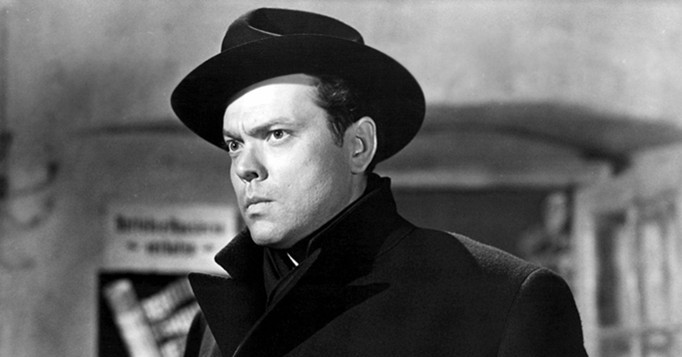
You know what the fellow said – in Italy, for thirty years under the Borgias, they had warfare, terror, murder and bloodshed, but they produced Michelangelo, Leonardo da Vinci and the Renaissance. In Switzerland, they had brotherly love, they had five hundred years of democracy and peace – and what did that produce? The cuckoo clock.
– Harry Lime
Sometime ago, when reading about Carol Reed, I came across a sentence describing this film. And this particular sentence hasn’t left me head ever since: The Third Man (1949) was made by men who knew the devastation of Europe at first hand.
In my opinion, The Third Man is precisely about that – Europe’s devastation – and what that brought upon men, physically and morally. For this reason, I’ve always viewed this film as the confrontation of the ordinary American audience (at the time) and its western tales with the gruesome, hypocrite, ironic and crude reality of a devastated continent, whose destruction knew no barriers between physicality, nationality and morality.
Thus, the main character, Holly Martins – a pulp writer of western and noir stories – is nothing more than the eyes of the audience, whom like him, embarks on a journey in old Vienna, becoming acquainted with a new and decadent reality, a post-war world.
And in this post-war world, the audience follows Holly Martins as he begins to uncover the mystery surrounding the death of his friend, Harry Lime. Falls in love with a girl who doesn’t love him back. And discovers the secrets and systems of a city corrupted by the activist of the well-established black market, therefore, being the symbol of Europe’s then current atmosphere.
In this sequence, The Third Man should be perceived as a landmark in post-war cinema and certainly in British cinema as it can also be viewed as a distant relative of a new wave of films part of the British movement Kitchen sink realism – which put under focus men and women who became disenchanted with the modern world that was born after the war.
The film was the second collaboration between filmmaker Carol Reed and author Graham Greene, after the thrilling The Fallen Idol produced in 1948, and in its portrayal of this new world touched a wide variety of themes and ideas such as loss, betrayal, guilt, disenchantment and loneliness. But besides this, there are a number of other reasons that justify the paramount position achieved by this film within British cinema.
1. Graham Greene’s Touch
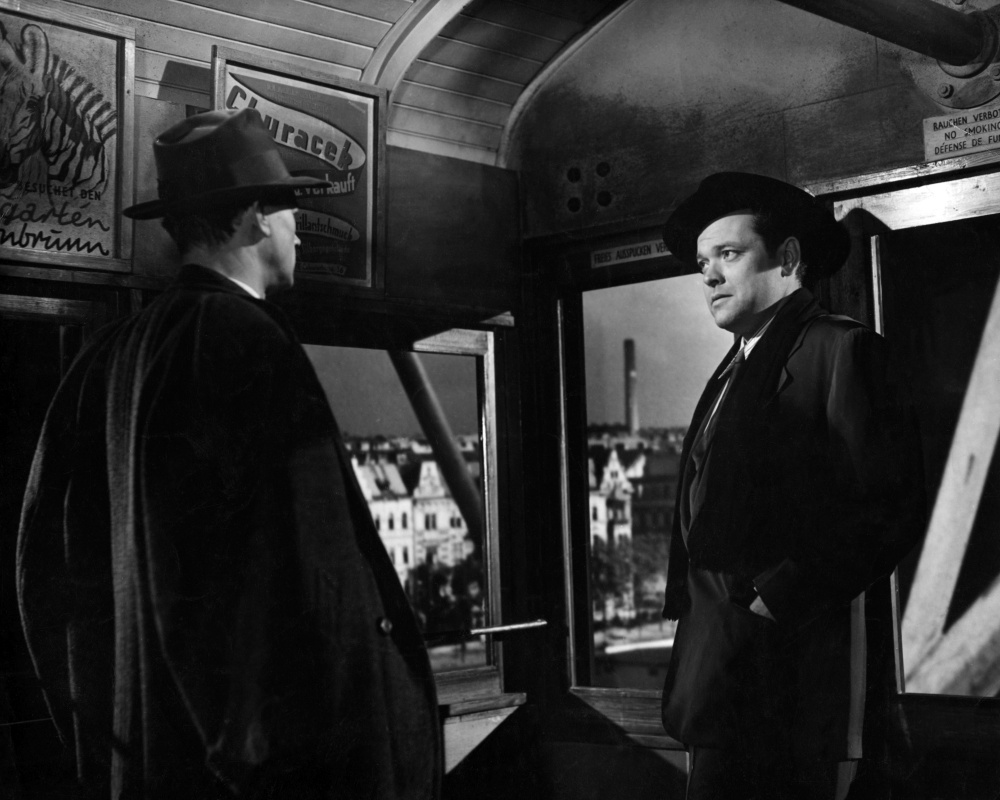
The Third Man was based on a novella by the same name written by British literature giant, Graham Greene. As noted by many sources, there is a sentence in the novella that serves as the prologue to the plot and atmosphere of The Third Man. And that is:
I saw a man walking down the Strand, whose funeral I had only recently attended.
This establishes many of the qualities of the author’s writing style, as well as, the tone he used which was a sort of sharp, realistic, conscientious and an ironic tone. Although, to general readers Graham Greene’s name is always tied to spy novels and mysteries, his style includes other themes and aspects, as well as, a clear set of characteristics.
First, many of his writings take place in a context of human misery which means not only physical but also moral poverty. This coincides with post-war Vienna which was attacked by a lack of moral scruples as it was by death, diseases and famine.
However, there is another important characteristic of this Graham Greene touch in the film and that is the conflictual element. However, in this context the conflict is not purely related to the plot but related with the individual’s own conflict. Greene’s writings always present, in their majority, a struggle of the soul, which refers of course to the never-ending clash between action and morality.
In this sequence, it is fair to write that much of the power in the author’s novels resides precisely on the exploration and comprehension of these type of conflicts, for instance, good and evil, moral decadence and moral purity, salvation and damnation and so forth.
And this is a characteristic also present in The Third Man, particularly surfacing in the two friends Harry Lime (other’s well-being vs self-well-being; morality vs amorality) and Holly Hunter (ingenuity vs awareness; others and self: love vs loneliness; morality: protect vs denounce). And amidst all this, the author also introduces in the film another of his favourite subjects: loss.
And the situation that serves this purpose is the non-corresponded love between Holly and Anna, who in the film’s end, shows her contempt and resentment for the writer by ignoring him and more importantly, showing that despite his actions she remains loyal to Harry Lime and her love for him. And all this is told in a cynical tone focused on themes related to the self while also reporting the surrounding decadence. Therefore, non-stranger to Greene’s style.
All these elements of the author’s style are conjugated with the script’s own structure that besides its great pieces of dialogue is also marked by its smooth yet sharp tone and a rhythmical fluidity that travels between great emotional moments, for instance, the scene in Anna’s room between Holly and Anna to those full of thrill and action such as the chase sequences. All ending where it had begun – in the cemetery.
In the words of Roger Ebert, who draws a relationship between The Third Man and Casablanca, the film: reflects the optimism of Americans and the bone-weariness of Europe after the war. It’s a story about grownups and children: Adults like Calloway, who has seen at first hand the results of Lime’s crimes, and children like the trusting Holly, who believes in the simplified good and evil of his Western novels.
The Third Man is like the exhausted aftermath of Casablanca. Both have heroes who are American exiles, awash in a world of treachery and black market intrigue. Both heroes love a woman battered by the war.
2. Defying conventions
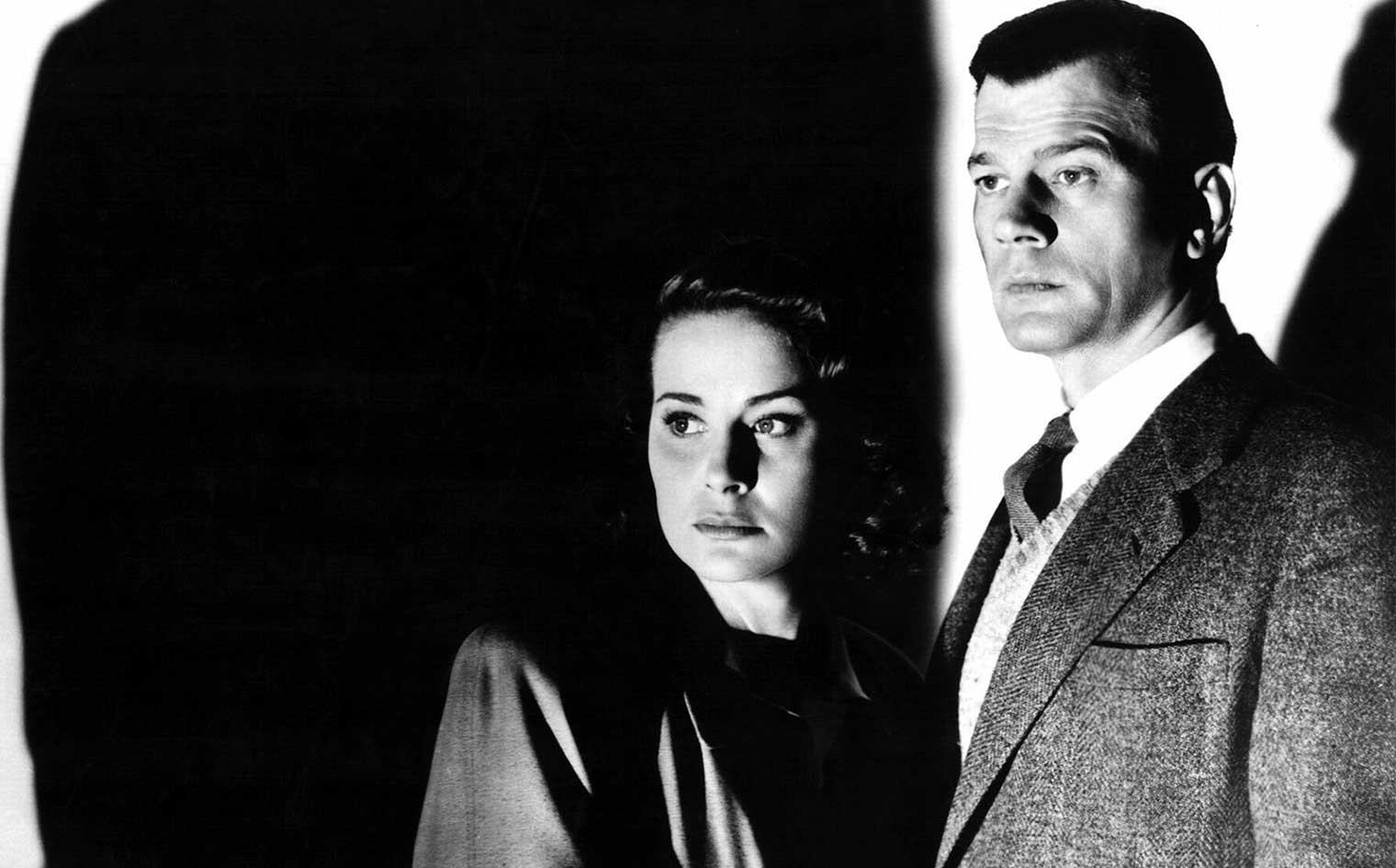
In many ways, The Third Man revealed itself a pusher of boundaries, therefore, there was not a more appropriated title to this second topic than defying conventions. And this was done mainly in the production’s logistics and in the use of music.
Regarding production logistics, the focus is the locations. After the war, many filmmakers decided to show Europe has it was left by the war in the same manner other filmmakers had done during the war by shooting documentaries part of the war effort (particularly the Americans).
Thus, especially the Italians, influenced by their newly formed neo-realism, decided to travel to Germany and other parts of Europe particularly affected by the war to shoot on locations marked by mountains of ruins, insalubrious places dominated by poverty, famine and disease.
In this context, Carol Reed was among the few film productions of other countries that decided to shoot on location and this was lucrative since its perceivable in the film’s atmosphere the despair of the people before the vital role the black market had in this new world.
About the use of sound, particularly, the film’s famous ‘tune’, it was also a successful gambling on the director’s part who refused to have the traditional Vienne waltz in the film’s background, and likewise, some other mechanical score just to fill the rest of the screen. So, when he met composer/performer Anton Karas by change, Carol Reed didn’t hesitate in having the sound of his zither cords as the film’s soundtrack.
One reviewer at the time wrote: And especially must he (Carol Reed) be credited with the brilliant and triumphant device of using the music of a zither as the sole musical background in this film. This eerie and mesmerizing music, which is rhythmic and passionate and sad, becomes, indeed, the commentator—the genius loci—of the Viennese scene. Pulsing with hopefulness and longing with “menace” and poignance and love, it thoroughly completes the illusions of a swift and intriguing romance.
Definitely, another defying convention decision…but not the last to be described since there are still the great visuals of the film to talk about.
3. Visual Magnitude






Reminding of Orson Welles’ stylized pictures, The Third Man is a great example of a picture influenced by the German expressionism and American noirs since in the film, there is an intelligent use of lenses that distort figures and space, as well as, emphasized the shadows and darker tones of the sets and locations.
4. Expressionist/Noir Style
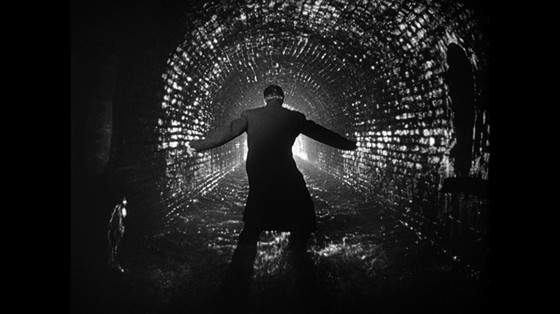
And directly connected with the film’s visual magnitude is naturally the film’s use of early Germanic expressionist influences, as well as, the American hard-boil style, which goes much further than solely the visual aspects of the film.
When studying the characteristics of German Expressionism one is confronted with non-visual aspects such as: the use (…) of ambiguity and the power of suggestion. Second, the focus on morbid/Gothic subjects and, thus, the creation of the concept of stimmung (English: Mood). Third, the recurrent pessimistic views over society and the idea of imminent social downfall. Forth, the exploration of human duality which leads to the concept of doppelgänger (popularly explored by Robert Stevenson in his novel “Dr. Jekyll and Mr. Hyde” dating back to 1886). And fifth, the role fate has in a man’s life and how minimal is man’s power to contradict what fate has designated for him. Which is a concept that has its roots in Greek Tragedy but was widely explored in German Romanticism and soon then after continued in Expressionism.
When studying the characteristics of American Film Noir one is also confronted by non-visual aspects: these were films that (…) depicted the hidden depravity and horrors of American society, as well as, its lack of morale, values and sins – lust, greed, lack of sentiment or cruelty. As in Greek theatre, there is an idea in Film Noir of the inevitability of faith and that sooner or later man will meet his faith and whatever that might bring him. (…) City landscape was then the stage for the unlikely protagonists – anti-heroic men, often connected with the crime business either as crime moguls, petty criminals or law enforcement agents (policemen, private detectives, lawyers); femme fatales (highly seductive women with an apparent lack of morality); and femme fragiles (marginalized women, victims of circumstance or brutal realities).
In this sequence, it is needless to explain and write about the use The Third Man does of some of these characteristics, since most of them are evident throughout the film.
5. Editing
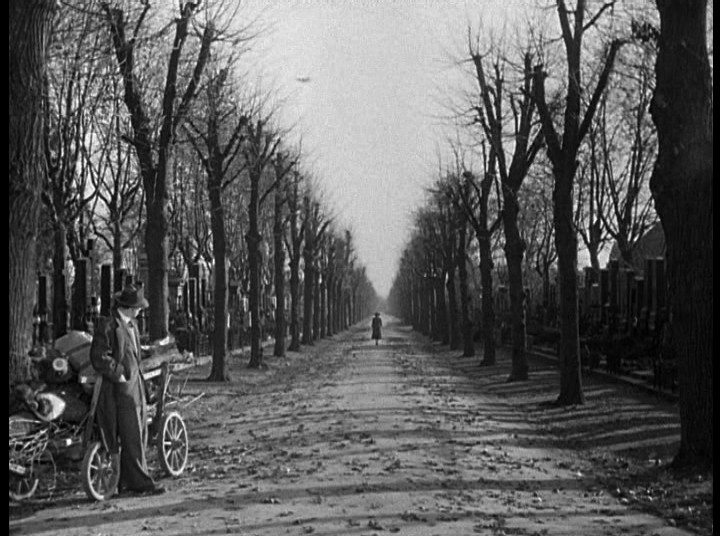
There are many moments in the film worth of consideration in this topic, however, much has been written and said on the chase sequences and the ending of Carol Reed’s The Third Man.
However, as many films teach how to edit with sound, cut through dialogue, scenes with music or how to use sound elements as means for cutting within a scene or passing from one scene to the other, the lesson to be acquired and appreciated from The Third Man is the following: how to edit a sequence without being guided by sound or dialogue and thus experiment (1) with the film’s internal rhythm or (2) the rhythm that has already been established within a given scene.
So, with that in mind the first example is the sewer chasing sequence where sound may have served as a guide to the editor but not to the viewer to whom it is only confusing since a clear map of space and the position of both parties was not established.
Thus, sound helps the rise of tension, which is accompanied by the mystery of how imminent is Harry’s arrest, since we do not know how close are the police officers to Harry. This moment also corresponds with the growing of distortion of place and its immensity and the people that crowd it through presence and echo.
As an example of tempting with an already established rhythm, is the film’s ending where after the funeral, Carol Reeds opts for a ‘temporal extension’ introducing long shots.